YOUR LONG ISLAND HOME GENERATOR INSTALLATION EXPERTS
Plan For The Next Power Outage Now. Prices Start From Just $109/mo
Emergency Service Available
No-Obligation, Up-Front Quotes
Transparent & Affordable Prices
Fast Home Generator Installation & Replacement on Long Island NY
Finding a good contractor can be a hassle. That’s why we’ve made it easy to schedule an appointment, get a price quote or just ask a question. We commit to delivering the utmost satisfaction and top quality home generator installation to every customer, at a fair and reasonable price.
Why Choose Domino?
We’re Local: Our technicians live and work on Long Island and we’re just a phone call away – 24/7
Same & Next Day Appointments: Fast service when you need it
Transparent Pricing: We’ll provide you with a no-obligation price quote before we start any work.
Certified & Licensed Techs: Our technicians are receiving continuous education to stay up-to-date with the latest technologies.
Fast, On-Time Arrival: Whether you need an urgent same-day appointment or just an estimate, you can count on us for timely and efficient service
100% Satisfaction Guaranteed: Our customer service team will ensure that you’re 100% happy with our service
Never Be in the Dark Again!
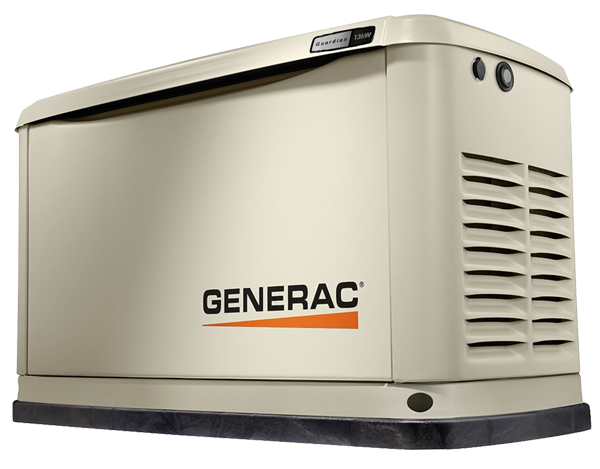
We had Domino install our new generator, and we couldn’t be happier with the service. Techs were knowledgeable and answered all our questions. Our new generator looks great and more importantly, it’s ready to go in the event of a power outage. Thank you!
~ Paul F.

Why Every Home Should Have An Emergency Generator
What could a Power Outage cost you? $10,000 on burst pipes. $500 on spoiled food. Not only are power outages inconvenient, they cost American households $150 billion a year.

Keep Food Supply Fresh
A Whole Home Generator is the best way to ensure food and produce stay fresh during a power outage. When installed and properly maintained, a Whole Home Generator will automatically detect a power loss and restore electricity to your entire home. This means your refrigerators, freezers, and other appliances will continue running, preventing perishable foods from spoiling.

Prevent Potential Flooding
If you have a sump pump and the power goes out during a bad storm, the sump pump will no longer work, leading to potential flooding issues. Basement flooding can cause extensive water damage and mold growth. A Whole Home Generator will power your sump pump to continue pumping water out during storms and prevent costly basement flooding.

Keep Your Water Running
Reliable access to running water is something we often take for granted – until the power goes out. If you source your water from a well, a well pump cannot operate without power, leaving you with no water. Installing a Whole Home Generator insures continuous water flow. Connected to key electrical circuits, a Whole Home Generator will automatically power well pumps, on-demand water heaters, and water treatment systems in a blackout.

Security and Safety
Power outages can make homes susceptible to break-ins or property damage in a moment of crisis. Without electricity, home alarm systems will not function, lights will go dark, and opportunistic intruders may target residences that appear unoccupied. Installing a Whole Home Generator in your Long Island home provides reliable backup electricity to keep all security systems operational during grid failures.

Access to Crucial Electronic Devices
Losing electricity strips away the digital connections we rely on for communication, and security monitoring. Power failures can leave you without vital updates on outage timelines, storm forecasts, and alerts. A Whole Home Generator sustains electricity to your WiFi router and devices, keeping your home online even as the wider grid goes dark.
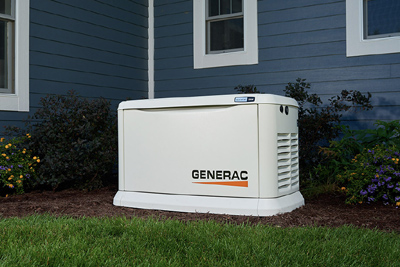
Save Money with Homeowners Insurance Discounts
Power outages and electrical surges can cause extensive damage to homes, resulting in expensive insurance claims. However, having a Whole Home Generator system installed in your Long Island home may qualify you for a lower insurance premium. Leading insurance providers recognize generators as loss prevention tools and offer policy discounts to households with full home backup power.
FEATURED PRODUCTS
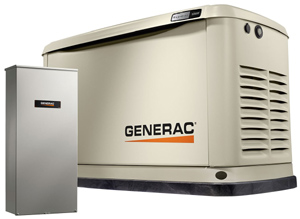
Generac Power Systems – 10kW Guardian Series Home Generator
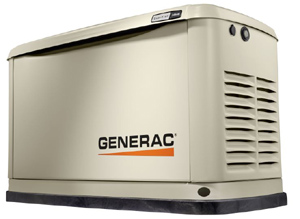
Generac Power Systems – 14kW Guardian Series Home Generator

Generac Power Systems – 20kW Guardian Series Home Generator
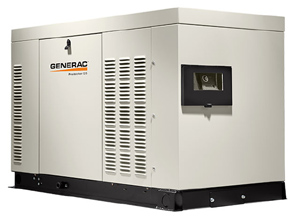
Generac Industrial Power – Protector Series 30 kW Generator
NEED EMERGENCY GENERATOR INSTALLATION OR REPLACEMENT?
Are you in need of a new or replacement emergency generator? An unexpected failure of your existing backup power system can be stressful and dangerous, leaving you vulnerable to power outages from storms, technical issues, or other problems with the electrical grid in your area. Don’t worry – our team has extensive experience providing rapid emergency generator installations and replacements. We understand power issues arise at the most inconvenient times, which is why we pride ourselves on our quick response times and ability to get your backup power restored promptly. Our technicians are experts at assessing your unique needs, recommending the best emergency generator or replacement solution to fit your budget while providing essential backup capability, and completing installations professionally and efficiently. We aim to exceed expectations with our customer-focused approach – your power needs and peace of mind are our top priorities. Contact us immediately if your home or business faces a power generator emergency and let our team provide the fast, reliable solution you deserve.
QUESTIONS? WE HAVE ANSWERS!
Installation costs for a whole house generator are influenced by factors such as the generator’s size and capacity, local installation codes and regulations, the complexity of the setup, necessary electrical upgrades, and additional features like automatic transfer switches.
Reputable companies like Generac, Cummins, and Kohler are frequently recognized for their quality whole house generator installations. Choosing a well-known company with a solid track record and reliable customer service is advised.
The maintenance schedule for a home generator typically includes regular oil and filter changes, battery inspection, and routine operational checks to ensure the generator is ready for use when needed. Manufacturer guidelines usually provide specific maintenance intervals.
Installation costs can vary widely for different-sized homes. Larger homes may require generators with higher capacity, which can increase both the purchase price and installation complexity. Smaller homes tend to need less powerful generators, which may result in lower overall costs.
Homeowners can expect a whole house generator to provide peace of mind and convenience during power outages, potentially increase property value, and reduce loss from spoiled food or other issues caused by prolonged lack of electricity. This payoff should be compared against the upfront and ongoing costs.
When choosing a generator, important features to consider include the fuel source, power output sufficient for your home’s needs, noise level, fuel efficiency, transfer switch type, and remote monitoring capabilities. These factors help ensure the generator meets your specific requirements for safety and convenience.
SERVING LONG ISLAND NY FOR OVER 30 YEARS
Thousands of Long Islanders count on us for providing reliable and efficient home services, and so can you. We’re looking forward to serving you!
Wondering What a Whole Home Generator Installation Costs on Long Island, NY?
When we consider installing a home generator, it’s important to evaluate the various options available, including generator size and power capacity, the different types of generators, and choosing the appropriate fuel type for our needs.
Assessing Generator Size and Power Capacity
To ensure we select a home generator that meets your power requirements, we must first calculate your energy usage during an outage. This involves listing vital appliances and systems we wish to operate and noting their wattage. For a typical home, a generator ranging from 5,000 to 7,500 watts may be sufficient for essential use. However, for whole-house power, we might consider larger options, such as a 20kW to 26kW standby generator which can handle most or all of your home’s power needs.
Comparing Generator Types
There are primary generator types to consider: portable generators and standby generators. Portable generators are less expensive and can be moved as needed, but they require manual setup and operation during a power outage. On the other hand, standby generators are permanently installed and provide automatic backup power when needed. Solar generators are also available, offering a renewable energy option, though they may have limitations in power output and depend on weather conditions.
- Portable Generator: Lower cost, manual operation, movable.
- Standby Generator: Higher cost, automatic operation, permanent installation.
- Solar Generator: Renewable energy, weather-dependent.
Choosing the Right Fuel Type
The fuel type is a significant factor in generator installation. Common fuel sources include:
- Natural Gas: Convenient for homes with an existing gas line, it provides a clean and reliable fuel supply.
- Propane: Offers a long shelf-life and is a good option for areas without natural gas.
- Diesel: Known for its efficiency and longer runtime, diesel generators are often used in larger applications.
- Gasoline: Readily available but has a shorter shelf-life; typically used for smaller, portable generators.
Fuel type decisions are influenced by availability, storage safety, and the expected run-time of the generator during an outage. For instance, natural gas is excellent for a constant supply, while propane is better suited for occasional use.
Planning and Preparing for Installation
As we embark on the journey of installing a home generator, it’s crucial that we first take a comprehensive inventory of our power needs and ascertain the proper placement for the unit. Compliance with local regulations and obtaining the requisite permissions are also essential in the planning phase.
Evaluating Your Electrical System
To ensure compatibility between the generator and our home’s electrical system, we first have to estimate your power consumption during normal operation and outages. A thorough electrical evaluation includes:
- Total amperage: Calculating the total amperage our electrical appliances require.
- Critical loads: Identifying which circuits are vital during an outage (such as refrigerators, lighting, and heating systems).
- Surge capacity: Considering the generator’s ability to handle initial surge requirements of appliances.
Determining Installation Location
Selecting an appropriate location for the generator is a multiple-criteria decision. The location should:
- Comply with local codes: Ensure proper distance from windows and doors to prevent exhaust fumes from entering the home.
- Accessibility: Provide easy access for maintenance and fuel delivery, if necessary.
- Foundation: Be on a level surface. A pre-formed concrete pad or a poured concrete slab is often required to support the generator’s weight.
Obtaining Necessary Permits and Approvals
Before we initiate the installation process, addressing legal and administrative prerequisites is imperative. This involves:
- Building permits: Applying for local building permits, which may require a detailed installation plan.
- Homeowners association: If applicable, we seek approval from our homeowners association.
- Inspections: Scheduling necessary inspections which must comply with the electrical, fire, and building codes.
By addressing each of these aspects, we lay the groundwork for a smooth and compliant generator installation process.
Generator Installation Process and Costs
When it comes to installing a home generator, understanding the procedure and costs involved, as well as deciding between hiring a professional or attempting a DIY installation, are crucial steps. We’ll guide you through each phase to ensure that you make an informed decision.
Understanding the Installation Procedure
The installation of a home generator is comprehensive, requiring several key steps:
- Site Preparation: The chosen location must be cleared and prepared, providing a stable surface for the generator.
- Transfer Switch Installation: This switch shifts the power load from the main utility to the generator during an outage. An automatic transfer switch is often recommended for ease of use.
- Generator Placement: The unit is then positioned and connected to the fuel source, whether it be gas, propane, or diesel.
- Electrical Connections: Properly connecting your generator to the transfer switch is critical for safety and functionality.
- Testing: Once installed, the system is thoroughly tested, ensuring the generator operates automatically during a power failure.
Analyzing Installation Cost Factors
Several factors influence the installation cost of a home generator:
- Size and Type of Generator: The capacity of the generator to power essential items like refrigerators, air conditioning, and sump pumps is crucial. Larger, more powerful units cost more.
- Brand: Different brands like Generac generators can vary in price. Quality and features lead to cost variations.
- Transfer Switch: The cost to install a transfer switch generally ranges from $400 to $1,300.
- Labor: Hiring professionals comes at a cost, generally between $3,000 and $5,000 on average, though complex installations can be higher.
Average Cost Breakdown for Generator Installation
| Cost Item | Price Range |
|---|---|
| Generator Unit | $1,524 – $8,658 |
| Transfer Switch | $400 – $1,300 |
| Professional Labor | $3,000 – $5,000 |
| Additional Electrical Work | Variable |
Hiring a Professional vs DIY Installation
We must contemplate the pros and cons:
- Hiring a Professional:
- Pros: Expertise ensures a safe and code-compliant installation. Often includes warranty and follow-up support.
- Cons: Higher initial cost compared to DIY.
- DIY Generator Installation:
- Pros: Potential cost savings if you have the necessary skills.
- Cons: Risk of improper installation leading to safety hazards or voided warranties.
In most cases, due to the technical and safety aspects involved, we heavily lean towards recommending professional installation services. This ensures that your generator is installed correctly and operates reliably when needed.
Maintaining Your Home Generator
Proper maintenance is the backbone of reliable generator operation. We’ll guide you through regular upkeep and point out signs indicating the need for repair or servicing.
Routine Generator Maintenance
Daily and Weekly Checks
We recommend a consistent schedule for inspecting your generator to ensure it remains in peak condition.
- Visual Inspection: Once a week, we check for any signs of wear or external damage, including cracks or leaks. It’s crucial to ensure that all parts are secure and the unit is free from dirt and debris.
- Airflow Vents: Our routine includes cleaning any buildup off the vents to prevent overheating, using a damp cloth for the exterior.
- Battery Assessment: Every month, we inspect the battery, cleaning terminals and ensuring tight connections to avoid starting issues.
- Oil and Filter Change: Depending on the manufacturer’s recommendation, we generally change the oil and filter after a specified number of service hours or at least once per season.
- Coolant Levels: We keep an eye on coolant levels, especially before an expected period of continuous use.
Identifying Common Repairs and Servicing
Annual Servicing
We undertake comprehensive servicing of the generator’s critical components annually:
- Spark Plugs: Replacing the spark plugs is key; we compare old ones to new to gauge their condition.
- Air Filter: Similarly, after a couple of years, we replace the air filter to ensure efficient operation.
- Engine: If we notice performance issues, an engine inspection is due to preemptively address any potential repair needs.
Repair needs are often signaled by unusual noises, difficulty starting, or inconsistent power output. In these cases, we consult a professional service provider to avoid emergency situations and prolong the generator’s lifespan.
Safety and Best Practices
When installing or replacing home generators, we prioritize safety to ensure the protection of our home and loved ones from hazards such as fires and carbon monoxide poisoning, especially during power outages caused by extreme weather.
Avoiding Hazards
To prevent risks associated with home generators, we observe the following safety measures:
- Location: We always position generators at least 20 feet away from our home, directing the exhaust away to prevent carbon monoxide poisoning.
- Fuel Handling: We turn off the generator and let it cool before refuelling to avoid gasoline ignition on hot parts, and we store fuel in an approved safety can in a cool, dry place.
- Wet Conditions: We never touch the generator with wet hands to reduce the risk of electric shock.
It is our responsibility to maintain a safe operation, which provides not only electricity during power outages but also peace of mind, knowing that we have taken the necessary precautions to protect our household.
Complying with Regulations and Guidelines
We adhere strictly to local laws and manufacturer’s guidelines when installing and operating home generators to ensure the following:
- Permits: We acquire the necessary permits required by our local government for generator installation.
- Professional Inspection: After installation, we have a professional inspect the setup to ensure it aligns with natural gas lines and fuel lines safely and correctly.
- Guidelines: We follow the manufacturer’s instructions for operation and maintenance, as well as adhere to any specific guidelines recommended by safety organizations.
Consistently complying with these regulations and guidelines ensures that we safeguard our homes from the dangers of improper generator use during inclement weather or unexpected power outages.
